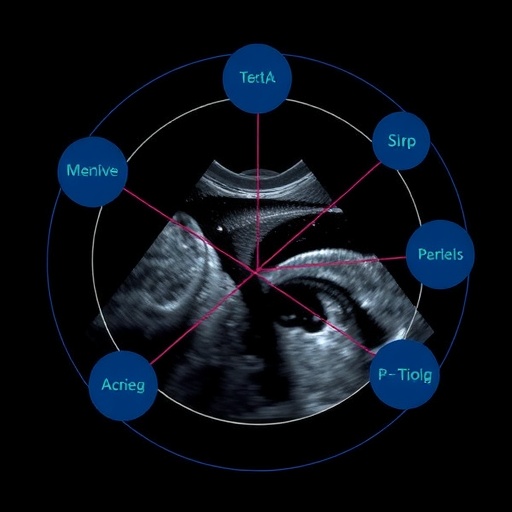In the realm of medical technology, the assurance of quality in clinical ultrasound devices cannot be overstated. The research conducted by Vuorenmaa et al. serves as a significant contribution to this field, presenting an in-depth comparison of three distinct quality assurance methods utilized in clinical ultrasound settings. This investigation underscores the pressing need for reliable and effective quality control measures, particularly as ultrasound technology evolves and becomes increasingly sophisticated in its applications.
The essential foundation of this study revolves around the critical parameters that influence the performance and reliability of ultrasound devices. Quality assurance methodologies must not only meet regulatory standards but also ensure that the devices deliver accurate diagnostic information to healthcare providers. The three methods evaluated in this study reflect varying approaches to assessing device functionality, performance, and safety.
The first method examined involves the use of routine performance testing protocols that adhere to established guidelines in the medical imaging field. These protocols are designed to assess key metrics such as image quality, spatial resolution, and sensitivity. Such rigorous testing is essential for maintaining compliance with safety standards and for ensuring that practitioners can trust the diagnostic information provided by ultrasound examinations. The results from this method set a baseline for the other approaches evaluated in the study.
The second quality assurance method compared in the research introduces an innovative approach that leverages advanced software algorithms for device analysis. This method enhances the traditional evaluation techniques by incorporating real-time data interpretation, which allows for immediate performance feedback. The integration of artificial intelligence into quality assurance processes holds considerable promise, as it could significantly reduce the likelihood of human error during assessments while enhancing precision in evaluating device performance metrics.
The third method under scrutiny involves a collaborative quality assurance model, which emphasizes teamwork among medical professionals, engineers, and technical staff. This approach focuses on continuous education and feedback loops, promoting a culture of accountability and shared responsibility for device performance. By fostering collaboration, this model addresses the multifaceted nature of ultrasound device functioning, including the interaction between operators and technology, which can influence diagnostic outcomes.
Throughout the study, the researchers meticulously analyzed the strengths and weaknesses of each quality assurance method. This comparative analysis not only identifies which method provides the most reliable outcomes but also highlights the importance of context in selecting an appropriate quality control mechanism. For instance, certain devices may benefit more from algorithm-driven assessments, while others might require a more traditional approach.
Examining the empirical results yielded by this thorough investigation reveals that all three quality assurance methods can be effective in different clinical environments. However, the study also emphasizes that a one-size-fits-all approach is not feasible. Factors such as the type of ultrasound device, the specific clinical setting, and the user expertise all play pivotal roles in determining the most effective quality assurance methodology.
The implications of these findings are vast, as they not only impact manufacturers and healthcare providers but also have potential ramifications for patient safety and care quality. Ensuring that ultrasound devices are consistently performing at optimal levels can directly influence diagnostic accuracy, which in turn affects treatment decisions and patient outcomes. Therefore, the insights gained from this research underscore the need for continuous improvement and adaptation in quality assurance practices to align with technological advancements.
In conclusion, the research conducted by Vuorenmaa et al. contributes valuable insights into the landscape of quality assurance methodologies for clinical ultrasound devices. By contrasting various approaches and analyzing their effectiveness, this study lays the groundwork for future innovations in quality control practices within the field. It encourages stakeholders to remain vigilant and proactive in their quality assurance efforts, ultimately striving to enhance patient safety and improve health outcomes through reliable medical technology.
As ultrasound technology continues to evolve, the findings of this research hold significant relevance not only for existing practices but also for the future of medical imaging. Innovative quality assurance methods that integrate enhanced technology and collaborative frameworks can lead to improved device reliability and diagnostics, ultimately benefiting both healthcare providers and patients alike. The ongoing commitment to quality assurance will undoubtedly shape the future of clinical practice in ultrasound and foster further advancements in this critical area of healthcare.
Subject of Research: Quality Assurance Methods for Clinical Ultrasound Devices
Article Title: Comparison of Three Quality Assurance Methods for Clinical Ultrasound Devices
Article References: Vuorenmaa, A., Koivikko, A., Siitama, E. et al. Comparison of Three Quality Assurance Methods for Clinical Ultrasound Devices. J. Med. Biol. Eng. 45, 147–155 (2025). https://doi.org/10.1007/s40846-025-00932-9
Image Credits: AI Generated
DOI: https://doi.org/10.1007/s40846-025-00932-9
Keywords: Quality Assurance, Clinical Ultrasound, Medical Imaging, Diagnostic Accuracy, Performance Testing, Artificial Intelligence.




